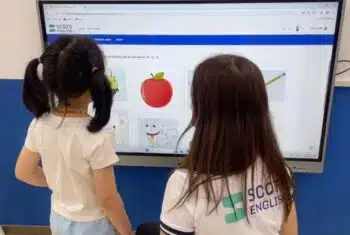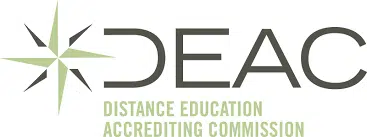Things To Know About Vietnamese Classroom Culture
Join a global community of over 200,000 TEFL teachers working throughout the world! Enrol me!
Vietnam is a travel magnet and TEFL teacher hotspot. Timea, a TTA alumna based in Vietnam, lived off the beaten path in Phúc Yên before relocating to Thanh Hóa city.
She knows all about Vietnamese lifestyle and spending dong, so she clued us up on Vietnam’s cost of living in this blog post: What Is The Cost Of Living In Vietnam? We Asked Our Teachers
This time, she’s giving us the expat teacher’s take on Vietnamese classroom culture.
But first, a short introduction…

Timea: My name is Timea, but my students call me Teacher Timi. 😊
I’ve always had a strong desire to experience life to the fullest through adventures, travelling, meeting new people, and learning about different cultures.
That led me to complete a Level 5 TEFL certificate with The TEFL Academy and give teaching abroad a try.
I’ve been living in Vietnam since October 2024. I teach at an English centre with more than 14 branches across Northern Vietnam. My current branch is in Thanh Hoa, about two to three hours south of Hanoi.
Those are strong reasons for entering the wonderful world of TEFL.
Having taught in Vietnamese classrooms for nearly a year, Timea’s got all the juicy classroom details you need to know.
Here’s what she’s learned so far.
What should teachers know about classroom culture in Vietnam?
Class sizes can vary depending on the type of institution.
In public schools, you might have 30 students or more, while private centres usually offer smaller class sizes where teachers can give more individual attention to each student.
Since this personalised approach is what parents are paying for, these centres are generally a bit more expensive.
For the same reason, teachers are often asked to write reports on each student’s progress and areas they need to improve. However, not every centre asks for this, and the frequency of reports can also differ from centre to centre. At my workplace, for example, we write short reports after every sixth session and evaluate mid-term and final exams.
Working in an English centre means students attend their regular public school during the day, and come to us for evening and weekend classes. Naturally, this puts some pressure on them, but they’re used to it.
In Vietnam, extra classes are designed to be fun and engaging, so learning doesn’t feel like a burden.

In the classroom, there’s usually a Vietnamese Teacher Assistant (TA) to help with classroom management or translation, especially with very Young Learners (ages 3-5).
TAs are a big help, but it’s important to keep in mind that their pay is often low and their workload is heavy, so you can’t always rely on them fully.
I consider myself lucky as all my TAs are amazing!
Read more: How To Teach With A Teaching Assistant
How does Vietnamese classroom culture differ from the West?
The most noticeable difference is that everything is on display.
The administration in private schools often feels the need to prove itself to parents. As a result, all classrooms are equipped with cameras.
The head teacher, who is based in Hanoi, often logs in to review our teaching performance and provide feedback.
One of the main responsibilities of TAs is to record as many individual videos of students to share with their parents as possible, which can be disruptive, as they might prioritise video creation over classroom management or student understanding.
Also, sitting on desks is considered rude and unacceptable in Vietnam, and I’ve been advised against it.
Read more: Navigating Culture Shock: My Real Experience Teaching English In Vietnam
How are students expected to behave?
I think the teacher-student relationship in my classes is pretty healthy.
I try to be friendly and approachable, but also believe that respect is key to keeping things running smoothly.
If I acted like their friend, they’d probably just want to play all the time and not take me seriously. They need to learn appropriate classroom behaviour.
Parents are happy to see their children learn classic classroom behaviour and show respect to teachers and others.
I lean more toward being a strict teacher. I expect students to raise their hands when answering rather than shouting individually, creating chaos in the classroom. I try to teach them this early.
Strictness varies between older and Younger Learners, like those in kindergarten. Young Learners really like attention and affection — some more than others. A few are super huggy and often interrupt class just to say “teacher” and get a little extra love.

How do students typically show respect for teachers?
Timea shares two cultural customs that stand out:
- Standing up when answering questions.
- Accepting things with both hands.
In Vietnamese culture, similarly to South Korea, students stand up when answering a teacher’s question, showing respect to them.
Then, I’ve noticed that when I hand out papers, many students take them with both hands, or with one hand while gently touching their other arm. It’s a small but meaningful gesture of politeness and attentiveness.
Both customs are ways to show respect to the teacher, though the second one is not always strictly followed.
In Vietnam, it’s polite to give and receive items with both hands. This applies to everyday situations, such as handing over money to a cashier, and not just in a classroom. If you only use one hand, you should gently touch the elbow of the outstretched arm with your other hand.
What’s the teacher-student dynamic like?
In Vietnam, the teacher-student relationship is built on mutual respect. Teachers are seen as trusted figures, and students are encouraged to follow instructions, speak politely, and show good manners in the classroom.
The cultural value of respect creates a strong foundation for learning.
That said, it’s important to remember that many of these students attend English classes after school or on weekends. They’re still kids, and naturally, some of them get tired, lose focus, or become easily distracted.
It’s part of the job to meet them where they are and support their learning.
Despite this, I’ve found that most students, especially older ones, continue to show respect and try their best. They generally have a positive attitude towards learning and are co-operative.
That balance of understanding their limits while maintaining expectations helps build a strong, positive teacher-student dynamic.
Read more: 5 Tips For Building Rapport In The EFL Classroom
Are there any unexpected classroom routines?
There aren’t any traditional rituals, but we do use a classroom system where students earn “dollars” for good behaviour or active participation. Three dollars is the maximum they can earn in one class.
It’s a simple reward system, but the students really enjoy it, and it works well as motivation. It’s been surprisingly effective for managing the class and keeping them engaged. For kindy [kindergarten] students, this system might be a little less effective.
In one of my younger, harder-to-manage classes, I tweaked the reward system.
Instead of giving them dollars, they start with six smiley faces next to their names. One to two smiley faces equal one dollar. If they misbehave, I pretend to erase a smiley face. This is often effective.
If it doesn’t work, stickers are always a win.

Read more: How To Keep Young Learners Interested
How does academic pressure affect your students?
Academic pressure is definitely a part of student life here. Many students have busy schedules filled with extra classes and tutoring, so they sometimes come to class tired or a bit zoned out.
On top of that, parental expectations are quite high, especially since these private centres aren’t cheap.
As a school, we have to consider this and do our best to create a balanced, welcoming atmosphere. This can become difficult when students misbehave, especially since we can’t revisit a lesson more than once.
PowerPoint lessons are provided by the centre and must be followed strictly. As a result, students need to keep up with the pace and make sure to practise at home too, which can be challenging.
However, most students still manage to find plenty of energy to participate in class activities, especially since these are mostly game-based and interactive.
What are class sizes like?
My biggest class is a kindy group with 14 students aged 3-5 years old. They’re quite a handful, which means you need plenty of energy and patience.
The smallest class I’ve had was around 7-8 students, which felt a lot more manageable and personal, but things have been changing recently.
When I first started, class sizes in private centres were kept small, but numbers have been growing over the past year. Some classes are up to 20 students!

Read more: Top Tips For Teaching Large Classes In TEFL
What role do parents play in classroom expectations?
Parent input definitely shapes a lot of what happens in the classroom, whether directly or behind the scenes. They have a say in many aspects of the classroom, from teaching quality and classroom behaviour, to how the teacher looks or acts in class videos.
I remember being asked by the academic team to stand more during lessons, specifically when TAs were recording videos for parents. A few parents had complained that I was sitting too much.
Of course, I do stand while teaching — explaining things, using gestures and moving around to keep students engaged.
Read more: From Teacher-Centred To Learner-Centred: Transforming Your Classroom For Success
But when they work independently, I sit to supervise closely with Younger Learners who need one-on-one support. These are usually the moments the TAs film.
Parents sometimes make specific requests, like asking for their child to sit at the front so they can focus better or because they’re shy. These requests are taken seriously, and we do our best to accommodate them.
Read more: A Day In The Life Of An English Teacher In Vietnam
What do teachers wear to school?
In Vietnam, appearance is taken seriously, especially in formal or professional settings.
At my school, there’s a strong emphasis on presenting a unified and professional image.
All teachers and staff are required to wear a uniform, and there’s not much room for personal style.
We had to sign an “internal rules” document detailing the dress code. One example is that female teachers must wear light lipstick. It also includes guidance on acceptable colours for trousers and skirts.
The aim is to create consistency and show professionalism to both students and parents.
In public schools or more casual workplaces, teachers might have a bit more freedom in what they wear.
Still, looking clean, tidy, and presentable is a shared expectation everywhere.
Are there any particular difficulties Vietnamese students have in terms of learning English?
One of the biggest challenges is the limited awareness and acceptance of students’ learning disorders. Conditions like autism or severe ADHD are often overlooked.
Read more: How To Help Dyslexic Learners
Parents and schools rarely share this information with teachers, so teachers usually discover these difficulties through their own observations. Often, I’ve had to ask my TA if specific students had learning challenges so that I could support them.
Vietnamese learners also face some consistent pronunciation challenges. For example, they often struggle with pronouncing the /s/ sound at the end of words. It’s usually very subtle or missing completely.
Another common confusion is between the questions “How are you?” and “How old are you?”
Read more: Common Mistakes Of Vietnamese Learners Of English
Any tips on teaching in Vietnam?
- Be adaptable to different classroom sizes and student needs.
- Use more energy and a playful approach when teaching Younger Learners.
- Strong classroom management skills are essential, no matter the age group.
- Slow down your speech while students adjust to your way of speaking.
- Be patient.
So it seems Teaching in Vietnam is about more than just lessons — it’s performing (sometimes quite literally) with cameras rolling to keep parents connected.
Here, adaptability, respect, and presentation are everything, and even the smallest of gestures carry big meaning. If you’re ready to embrace the challenge, try teaching in Vietnam. Thank us later.
Accreditation & Quality Assurance
The TEFL Academy was the world’s first TEFL course provider to receive official recognition from government regulated awarding bodies in both the USA and UK. This means when you graduate you’ll hold a globally recognised Level 3 (120hr) Certificate or Level 5 (168hr) Diploma, meaning you can find work anywhere and apply for jobs immediately.
 United States
US
United States
US














